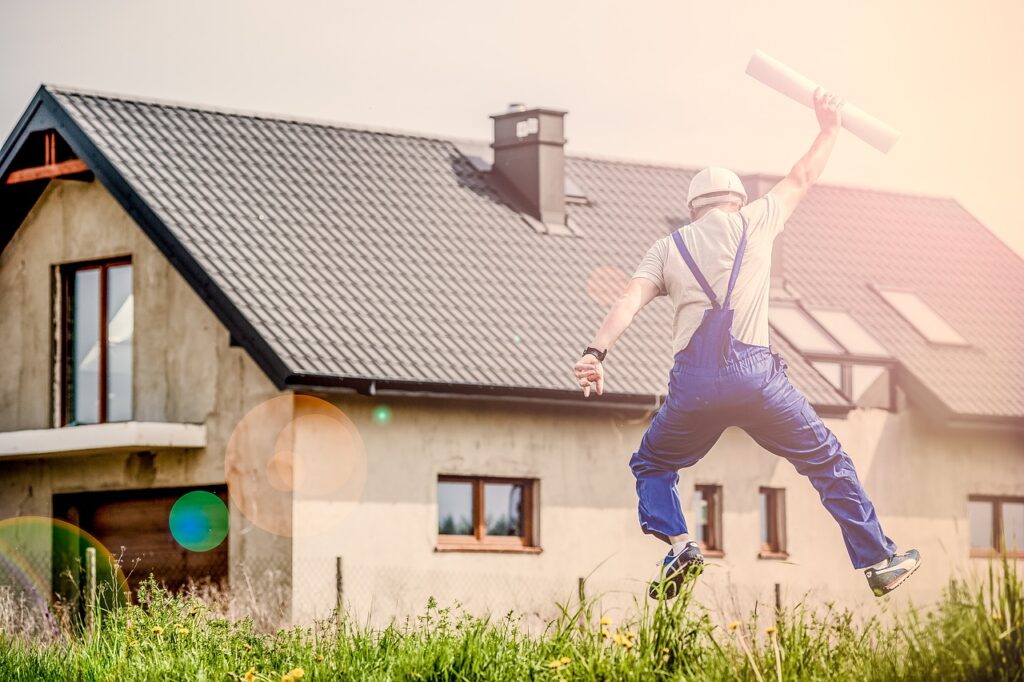Most property owners choose metal as building materials because they are considered eco-friendlier than the traditional construction materials we use. Because of this, it has become so popular that we see a surge in metal barns. Sustainability has become a key consideration for modern construction. Metal barns offer a range of environmental benefits that make them a smart, eco-friendly choice.
As agriculture, farming, and storage practices evolve, more property owners are looking for sustainable structures that minimize their carbon footprint while maximizing efficiency. Metal barns provide an environmentally responsible alternative to traditional wood barns, offering benefits such as energy efficiency, recyclability, reduced waste, and durability.
Reduced Deforestation and Conservation of Natural Resources
Traditional wooden barns require significant amounts of timber, which contributes to deforestation and habitat destruction. Large-scale tree harvesting reduces biodiversity, disrupts ecosystems, and depletes a vital natural resource. As forests shrink, carbon sequestration diminishes, exacerbating climate change and environmental degradation. Choosing a metal barn helps to alleviate this issue by reducing the demand for lumber, ensuring that forests can continue to play their crucial role in the planet’s ecological balance.
Steel, the primary material used in metal barns, is one of the most recycled materials in the world. Many manufacturers use recycled steel in the production of metal buildings, further reducing the environmental impact of raw material extraction. Unlike wood, which must be harvested and processed continuously, steel can be melted down and repurposed without losing its structural integrity. This sustainable approach reduces the need for virgin raw materials, lowering the overall carbon footprint of metal barn production while offering a durable and reliable building solution.
Since they opt for a metal barn, property owners contribute to the conservation of forests and help protect natural habitats while still obtaining a durable, functional structure. The long lifespan of metal barns means fewer resources are used over time compared to wooden barns, which require frequent repairs and eventual replacement. By reducing the need for timber and incorporating recycled materials, metal barns support environmentally friendly construction practices that promote sustainability for future generations.
Energy Efficiency and Insulation Benefits
Metal barns can be designed for superior energy efficiency, reducing the overall consumption of electricity for heating and cooling. Unlike traditional wooden barns, which can have gaps and air leaks that make temperature regulation difficult, metal barns offer tighter construction and the ability to incorporate energy-efficient insulation. Proper insulation helps retain indoor temperatures more effectively, keeping the space warmer in winter and cooler in summer, which minimizes the energy needed for climate control.
Reflective roofing panels and cool-coated steel surfaces help deflect sunlight, reducing heat buildup in warm climates. This results in lower energy use for air conditioning, making metal barns a more sustainable option for housing livestock, storing equipment, or working in a controlled environment. Additionally, metal barns can be designed with ventilation systems that promote natural airflow, reducing the need for artificial cooling and further enhancing energy efficiency.
Many property owners also choose to install solar panel systems on the roof of their metal barns, taking advantage of the structure’s large surface area to generate electricity. Solar energy integration allows for an energy-efficient operation that reduces reliance on fossil fuels and lowers utility bills over time. Whether used for agricultural purposes, workshops, or storage, a metal barn with energy-efficient features can significantly reduce a property’s overall energy consumption and environmental impact.
Longevity and Durability Reduce Waste
One of the major environmental benefits of metal barns is their longevity. Unlike wooden barns that may suffer from rot, termite damage, and structural degradation over time, metal barns are built to last. Steel is resistant to common issues such as mold, pests, and fire, which means that metal barns require less maintenance and fewer replacements over their lifespan. This extended durability makes metal barns a cost-effective and sustainable choice for property owners.
Because metal barns can last for decades with minimal repairs, they generate significantly less construction waste compared to wooden structures that may need frequent repairs, replacements, or rebuilding. Every time a wooden barn deteriorates or is destroyed due to environmental factors, the process of demolishing and rebuilding creates waste that often ends up in landfills. By contrast, metal barns require fewer repairs and produce less waste, helping to minimize the environmental footprint of agricultural and industrial buildings.
Additionally, when a metal barn reaches the end of its lifespan, it can be recycled rather than discarded. Steel can be melted down and repurposed for new construction projects, reducing the demand for new materials and preventing waste accumulation. The recyclability of metal barns ensures that they remain an environmentally responsible option, supporting a circular economy where materials are continuously reused rather than disposed of.
Reduced Construction Waste and Faster Assembly
Building a traditional wooden barn often results in excessive construction waste, with leftover wood, nails, and other materials discarded in the process. These materials not only contribute to environmental pollution but also add to the overall cost of construction due to inefficient use of resources. Metal barns, on the other hand, are often prefabricated, meaning that they are manufactured off-site with precise measurements and then assembled quickly on the property. Prefabrication minimizes waste by ensuring that materials are used efficiently, reducing scrap materials and excess debris. Because metal components are precisely cut and measured in a controlled environment, there is minimal on-site waste, making metal barns a more sustainable option.
Additionally, the faster assembly of metal barns means fewer resources are consumed in the construction process. Traditional barns require extensive labor, which can take weeks or even months to complete, depending on the complexity of the design. In contrast, prefabricated metal barns can be installed in a fraction of the time, reducing the number of labor hours required. This efficiency translates to lower costs for both materials and labor while also reducing the environmental impact of construction. Less fuel is used for transporting raw materials, and fewer man-hours are needed for labor, leading to a lower overall carbon footprint.
The speed and efficiency of metal barn construction also mean reduced disruption to the surrounding environment. With traditional wooden structures, extended construction periods can lead to soil erosion, disturbances to local wildlife, and an increase in noise pollution. Metal barns minimize these negative environmental impacts. Also, any metal waste that is generated can often be recycled, further enhancing the eco-friendliness of metal barn construction.
100% Recyclable Material
One of the most compelling eco-friendly benefits of metal barns is their recyclability. At the end of a metal barn’s lifespan, the steel components can be fully recycled and repurposed, reducing waste and the need for new raw materials. Unlike wood, which often deteriorates and becomes unusable, steel maintains its strength even after recycling, making it a truly sustainable building material.
Recycling metal barns helps decrease the demand for new steel production, which is an energy-intensive process. By choosing a metal barn, property owners contribute to the circular economy, where materials are continuously reused rather than discarded.
Improved Water Conservation and Drainage
Metal barns are designed with effective water drainage systems that help conserve water and prevent unnecessary runoff. Rainwater collection systems can be integrated into metal barn roofs to capture and store water for agricultural use, reducing the reliance on municipal water supplies. This is particularly beneficial for farmers who need a sustainable water source for irrigation, livestock, or cleaning purposes.
Compared to wooden barns that may absorb water and degrade over time, metal barns efficiently channel rainwater away from the structure, reducing the risk of mold growth, wood rot, and foundation damage. This not only preserves the longevity of the building but also promotes better water management in agricultural settings.
Minimal Use of Toxic Chemicals
Traditional wooden barns require regular treatments with pesticides, sealants, and preservatives to prevent rot, insect damage, and mold. Many of these chemical treatments contain harmful compounds that can leach into the soil and water supply, posing environmental risks.
Metal barns, in contrast, do not require chemical treatments to maintain their durability. Steel is naturally resistant to pests and moisture, eliminating the need for toxic coatings. This makes metal barns a safer choice for property owners who want to minimize their environmental impact and avoid exposing livestock or crops to hazardous chemicals.
Sustainable Roofing Options
Metal barns can be equipped with eco-friendly roofing solutions that enhance their sustainability. Reflective metal roofs reduce heat absorption, lowering cooling costs in hot climates. Green roofing systems, which incorporate vegetation or specialized coatings, can further enhance insulation and energy efficiency.
Additionally, metal barn roofs are highly durable and resistant to extreme weather conditions, reducing the need for frequent repairs or replacements. By investing in high-quality, energy-efficient roofing materials, property owners can further reduce their environmental impact while maintaining a comfortable interior climate.
Conclusion
The environmental benefits of choosing a metal barn make it a compelling option for property owners who prioritize sustainability, efficiency, and long-term durability. From reducing deforestation and conserving natural resources to promoting energy efficiency and recyclability, metal barns offer a greener alternative to traditional wooden structures.
By investing in a metal barn, property owners contribute to the conservation of forests, minimize construction waste, and embrace energy-efficient solutions that lower their carbon footprint. With the added benefits of recyclability, water conservation, and reduced use of toxic chemicals, metal barns provide a sustainable building choice that aligns with modern environmental standards.
As sustainability becomes an increasingly important factor in construction and agriculture, metal barns stand out as a smart investment for those looking to reduce their environmental impact while ensuring a durable and functional structure.

